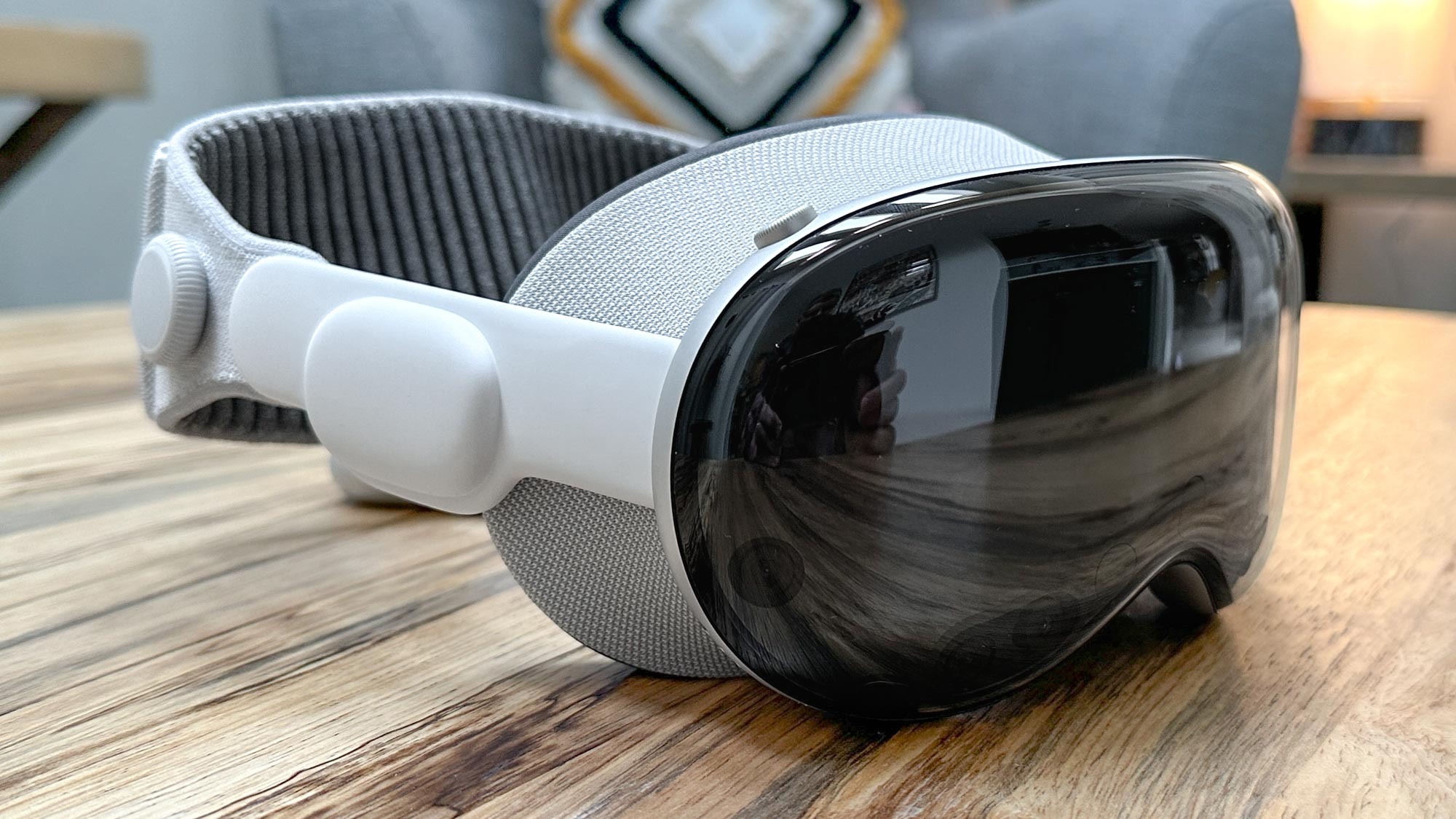
With Apple’s Vision Pro headset struggling to sell in sufficient volumes to justify a true successor, the company has reportedly turned its attention to a cheaper model.
This certainly feels like a sensible strategy. While there are a handful of design reasons why the headset may not have the mass appeal of the iPhone or the iPod — weight, comfort and form factor to name but three — they all pale in insignificance compared to the $3,500 price tag.
It’s already been rumored that the next headset might require tethering to a Mac or iPhone to reduce processing costs, but a new report in the Korean publication The Elec hints at another way in which Apple may look to cut costs for a cheaper product.
According to the site, Apple has reached out to manufacturers of small OLED-on-Silicon (OLEDoS) panels seeking units of 2.0 to 2.1 inches in size with a pixel density of 1,700 pixels per inch (PPI).
For comparison, the current model sports Sony OLEDoS panels measuring 1.42 inches with a pixel density of 3,386PPI. That results in a resolution of 3,660 x 3,200 per eye, and assuming the new panels share the same aspect ratio, that would mean a resolution down to around 2,600 x 2,300.
That would obviously lead to reduced image sharpness, which is a drawback for screens that are held quite so close to the eye. That said, 2,600 x 2,300 is still high compared to the competition, with the Meta Quest 3 recording a per-eye resolution of 2,064 x 2,208 and Sony’s PSVR 2 clocking in at 2,000 x 2,040.
The Elec highlights both LG and Samsung as possible partners for the new panels. While Samsung has a production line OLED panels with color filters similar to those used by Apple uses in the Vision Pro, LG currently does not. However, the report adds that Samsung would prefer to steer Apple towards a slightly different technology that uses RGB pixels in the OLED panel for higher brightness levels.
With Apple Vision Pro emphasizing the ‘Pro’ part of its name, it sounds like a cheaper headset may just be regular “Apple Vision”. Reducing the resolution and tethering off other Apple hardware sounds like two sensible measures to slash the price.
But with Meta’s $499 Quest 3 still a seventh of the price of Vision Pro, Apple is unlikely to ever be the value option — especially with a rumored cheaper version of Meta’s headset on the way.
!["[T]he First and Fifth Amendments Require ICE to Provide Information About the Whereabouts of a Detained Person"](https://images.inkl.com/s3/publisher/cover/212/reason-cover.png?w=600)






